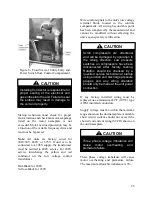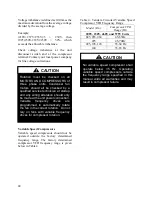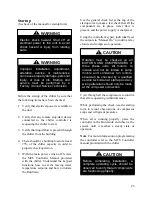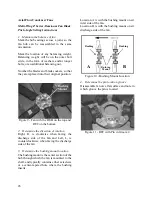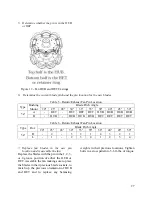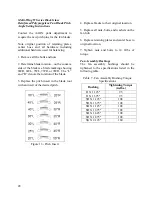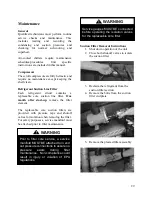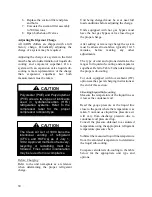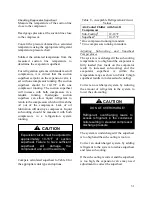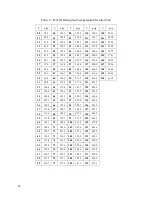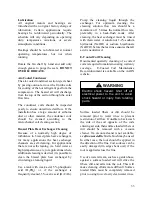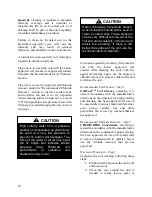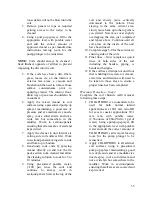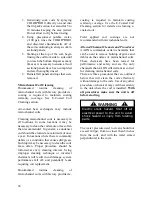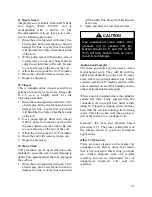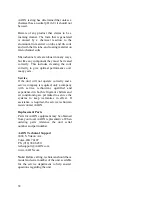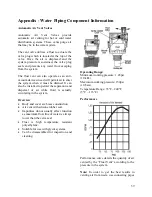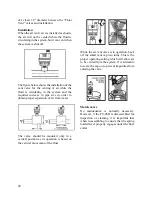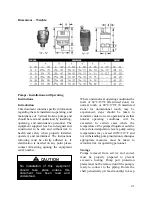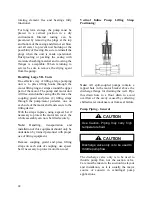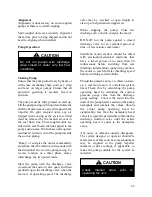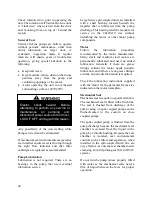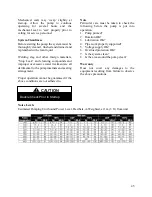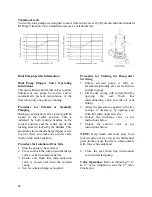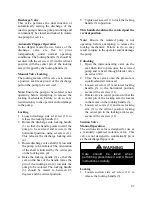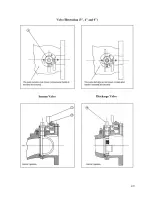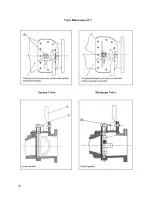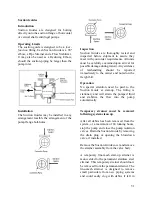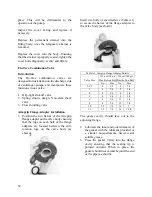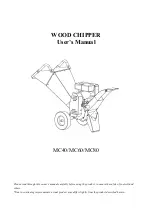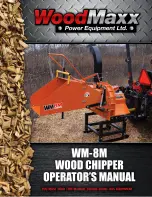
37
#1 Simple Green
Simple Green is available from AAON Parts
and Supply (Part# T10701) and is
biodegradable with a neutral 6.5 pH.
Recommendation is to use it at a 4 to 1 mix.
Use the following procedure.
1.
Rinse the coil completely with water. Use
a hard spray but be careful not to bend or
damage the fins. A spray that is too hard
will bend the fins. Spray from the fan side
of the coil.
2.
With a pump sprayer filled with a mix of
4 parts water to one part Simple Green
spray the air inlet face of the coil. Be sure
to cover all areas of the face of the coil.
3.
Allow the coil to soak for 10-15 minutes.
4.
Rinse the coil with water as in step one.
5.
Repeat as necessary.
#2 Vinegar
This is standard white vinegar available in
gallons from most grocery stores. It has a pH
of 2-3, so it is slightly acidic. Use the
following procedure.
1.
Rinse the coil completely with water. Use
a hard spray but be careful not to bend or
damage the fins. A spray that is too hard
will bend the fins. Spray from the fan side
of the coil.
2.
Use a pump sprayer filled with vinegar
(100%). Spray from the face of the coil in
the same direction as the airflow. Be sure
to cover all areas of the face of the coil.
3.
Allow the coil to soak for 10-15 minutes.
4.
Rinse the coil with water as in step one.
5.
Repeat as necessary.
#3 Water Flush
This procedure can be used when the only
material to cause the coil to need cleaning is
debris from plant material that has impinged
the coil face.
1.
Rinse the coil completely with water. Use
a hard spray but be careful not to bend or
damage the fins. A spray that is too hard
will bend the fins. Spray from the fan side
of the coil.
2.
Spray and rinse the coil from the face.
Application Examples
The three procedures can be used to clean
microchannel coils. They will fit with the
application depending on the area. In some
areas where the spring/summer has a large
cottonwood bloom #3 might work fine if the
unit is installed on an office building and no
other environmental factors apply.
When a unit is installed where the sprinkler
system has water being sprayed onto the
condenser coil you might have better results
using #2. Vinegar is slightly acidic and may
help with the calcium build up from drying
water. This also works well when grease is
part of the inlet air to a condenser coil.
Generally the best and broadest based
procedure is #1. The grease cutting effect of
the Simple Green is good for restaurant
applications.
Other Coil Cleaners
There are many cleaners on the market for
condenser coils. Before using any cleaner
that is not covered in this section you must
get written approval from the AAON
warranty and service department. Use of
unapproved
chemicals
will
void
the
warranty.
Use pressurized clean water, with
pressure not to exceed 140 psi.
Nozzle should be 6” and 80° to 90°
from coil face. Failure to do so could
result in coil damage.
CAUTION
Summary of Contents for LN Series
Page 49: ...49 ...
Page 50: ...50 ...
Page 57: ...57 Pressure Temperature Limits Flo Trex Cross Section ...
Page 62: ......

